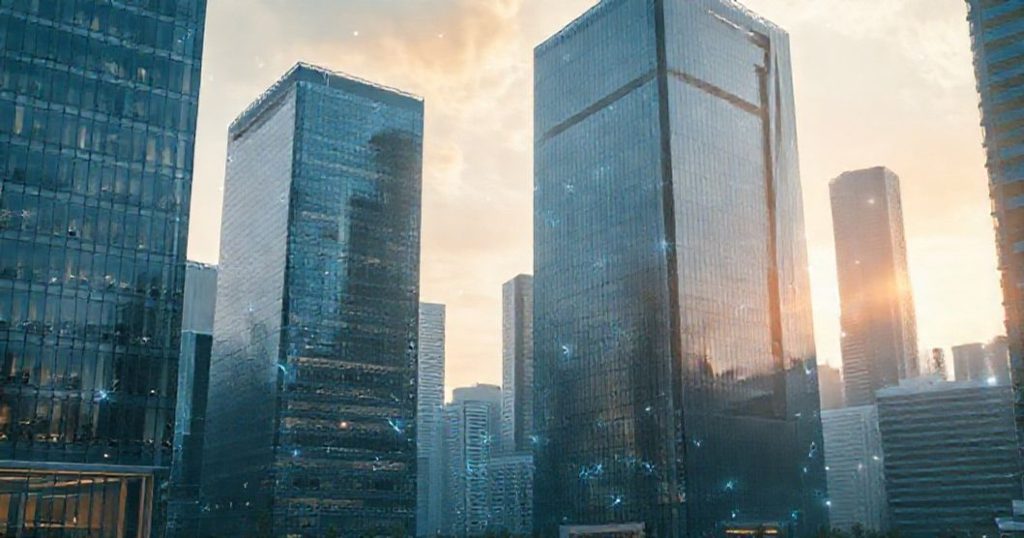Introduction to AI Image Generators for Architectural Visualization
Architectural visualization has undergone a significant transformation with the advent of AI image generators, empowering architects, designers, and professionals to create breathtaking, professional-grade visuals without the need for extensive design experience or expensive software. This revolutionary technology has democratized the creative process, allowing anyone with an idea and a few descriptive words to produce stunning images in mere seconds. In this comprehensive guide, we’ll delve into the world of AI image generators, exploring their capabilities, benefits, and practical applications in architectural visualization.
The traditional path to creating professional-quality images involves mastering complex design software, investing in pricey stock photo subscriptions, or hiring designers at rates that most small businesses and individual creators can’t afford. However, with the emergence of AI image generators, this barrier has been significantly lowered, making it possible for anyone to generate high-quality visuals that were previously reserved for large corporations or well-funded projects. One of the most exciting aspects of this technology is its accessibility; platforms like Icebox AI offer free AI image generation, making it possible for creators of all levels to produce professional-grade visuals without incurring substantial costs.
Understanding how AI image generators work is crucial for harnessing their full potential. These sophisticated tools leverage machine learning models trained on billions of image-text pairs to understand nuanced prompts and generate images with stunning accuracy and artistic flair. The process involves what’s called “latent space navigation,” where the AI doesn’t simply retrieve stored images but actually synthesizes entirely new visual content by blending and recombining learned features in ways that match your description. This fundamental mechanism explains why certain prompting techniques work better than others and why the same prompt can yield different results across different AI models.
The quality of your output depends heavily on how well you communicate your vision through text, which is why prompt engineering has emerged as a critical skill for anyone serious about AI image generation. Unlike traditional search engines where keywords are king, AI image generators respond better to descriptive, contextual language that paints a complete picture. For instance, rather than simply typing “building,” a prompt like “a modern, sustainable, eco-friendly building with large windows, situated in a lush green environment, under a clear blue sky” provides the AI with rich contextual information that leads to far more compelling results. The model can then leverage its understanding of architectural terminology, design principles, and compositional elements to create an image that matches not just the literal content but the aesthetic quality and mood you’re envisioning.
How AI Image Generators Process Your Prompts
When you input a prompt into an AI image generator, you initiate a complex computational process that analyzes your words, breaks them down into semantic components, and maps them onto learned visual concepts that the model has internalized during training. This process happens through latent space navigation, where the AI synthesizes new visual content by blending and recombining learned features. Understanding this mechanism helps explain why certain prompting techniques are more effective and why the same prompt can yield different results across AI models.
Different AI models have different strengths and specializations, which is why experienced creators often maintain accounts across multiple platforms. Some models excel at photorealism, producing images virtually indistinguishable from actual photographs, while others specialize in artistic styles like anime, digital art, or painterly effects. According to research published by leading AI labs, model architecture choices during training significantly impact both the speed of generation and the stylistic tendencies of the output. This explains why you might get dramatically different results from the same prompt on different platforms, and why it’s worth exploring various options to find which AI image generator best aligns with your creative vision and use cases.
The democratization of visual content creation has opened doors for small businesses, content creators, and hobbyists who previously couldn’t afford professional design services. This technology continues to advance at a breathtaking pace, with new models emerging every few months that push the boundaries of what’s possible, making tools like Icebox AI increasingly valuable for creators at all skill levels. As these tools continue to evolve and improve, they’re not replacing human creativity but rather amplifying it, allowing creators to focus on ideation and refinement while the AI handles the technical execution.
Features and Benefits of AI Image Generators for Architectural Visualization
AI image generators offer a myriad of features and benefits that make them indispensable for architectural visualization. One of the most significant advantages is the speed at which they can generate high-quality images, saving creators hours, if not days, of work. Additionally, these tools provide unparalleled accessibility, enabling anyone with a computer and an internet connection to produce professional-grade visuals, regardless of their design experience. The cost savings are also substantial, as creators no longer need to invest in expensive design software or hire professional designers.
Another critical benefit of AI image generators is their ability to facilitate rapid prototyping and iteration. Architects and designers can quickly test different concepts, materials, and environments, receiving immediate visual feedback that informs their design decisions. This iterative process is not only more efficient but also more effective, as it allows creators to explore a wider range of ideas and refine their designs based on real-time visual analysis. Furthermore, AI image generators can help reduce the risk associated with costly design mistakes by providing a clear, visual representation of the final product before construction begins.
The creative potential of AI image generators extends beyond mere practicality; they also enable architects and designers to push the boundaries of their imagination, exploring novel designs, shapes, and styles that might be difficult or impossible to achieve with traditional methods. By automating the more mundane aspects of the design process, these tools free creators to focus on the artistic and conceptual aspects of their work, leading to more innovative and captivating architectural visualizations.
Best Practices for Using AI Image Generators
To get the most out of AI image generators, it’s essential to understand best practices for prompt engineering, model selection, and post-processing. Crafting effective prompts is critical, as the quality of the input directly influences the quality of the output. This involves using descriptive, contextual language that provides the AI with a clear understanding of your vision. It’s also important to experiment with different models and platforms to find which ones work best for your specific needs and preferences.
Post-processing is another crucial step in the workflow, as it allows you to refine and enhance the generated images. This can involve adjusting colors, contrasts, and lighting, as well as adding textures, overlays, or other design elements to create a more polished and professional look. Many creators also use AI-generated images as a starting point, further modifying them in design software to add unique touches or to better align the image with their brand’s visual identity.
Staying up-to-date with the latest developments in AI image generation is also vital, as new models and features are being released regularly. Following industry leaders, researchers, and creators on social media and blogs can provide valuable insights into the latest trends and best practices. Additionally, participating in online communities and forums dedicated to AI art and design can offer a wealth of knowledge, resources, and feedback from peers and experts alike.
Conclusion
In conclusion, AI image generators have revolutionized the field of architectural visualization, offering unprecedented creative potential, efficiency, and accessibility. By understanding how these tools work, mastering the art of prompt engineering, and leveraging their capabilities, architects, designers, and creators can produce stunning, professional-grade visuals that captivate audiences and bring their designs to life. Whether you’re a seasoned professional or just starting out, AI image generators like Icebox AI are poised to transform your workflow, enabling you to focus on what matters most – your creativity and vision.
As you embark on this exciting journey into the world of AI-generated architectural visualizations, remember that the possibilities are endless, and the tools are constantly evolving. Don’t be afraid to experiment, to push the boundaries of what’s possible, and to explore new horizons. With AI image generators by your side, you’re not just creating visuals – you’re crafting experiences, telling stories, and bringing your most ambitious projects to life.
So, why wait? Start creating today with Icebox AI, and discover a world where imagination knows no bounds, and creativity is limitless. With the power of AI at your fingertips, you’re ready to redefine the future of architectural visualization and make your mark on the world.
Frequently Asked Questions
Q: Can I use AI-generated images for commercial purposes?
A: Yes, many AI image generators, including Icebox AI, provide commercial usage rights for images you create. However, it’s essential to review the platform’s terms of service, as rules vary significantly between providers. Always ensure you understand the licensing model and any restrictions on usage before using AI-generated images commercially.
Q: How do I get started with AI image generation for architectural visualization?
A: Getting started is straightforward. Begin by exploring different AI image generators, such as Icebox AI, to find the one that best suits your needs. Then, start crafting your prompts, using descriptive language to convey your vision. Don’t hesitate to experiment with different models and platforms, and remember to post-process your images for the best results.
Q: What are the limitations of AI image generators for architectural visualization?
A: While AI image generators are incredibly powerful, they do have limitations. Currently, they may struggle with highly complex scenes, intricate details, or very specific architectural styles. However, these limitations are constantly being addressed as the technology advances. It’s also important to note that AI-generated images should be used responsibly and in compliance with the terms of service of the platform you’re using.



